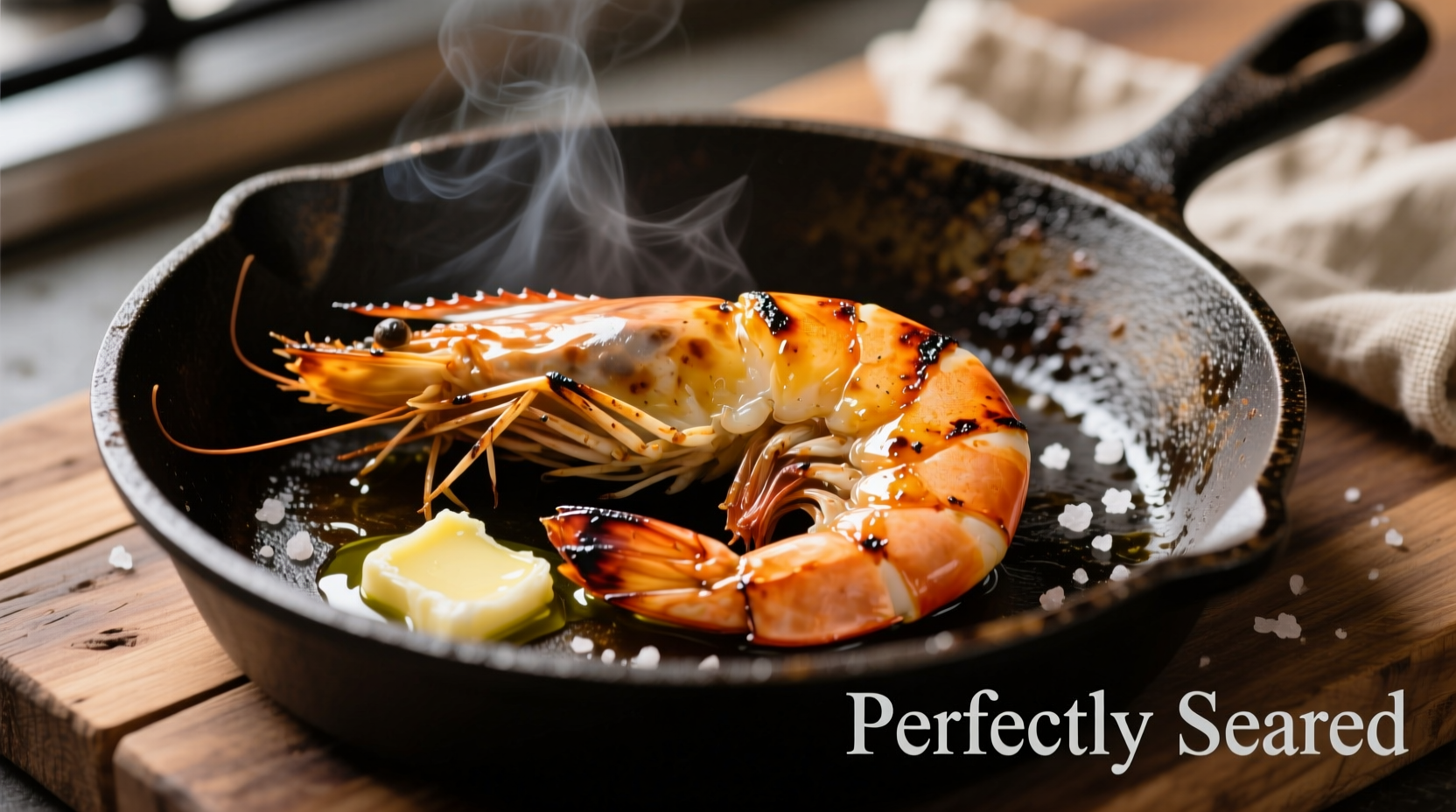Perfectly pan-cooked shrimp delivers restaurant-quality results in minutes with minimal equipment. This guide reveals the exact techniques professional chefs use to achieve tender, flavorful shrimp every time—no rubbery or undercooked results. Whether you're preparing a quick weeknight dinner or impressing guests, mastering this fundamental cooking method unlocks endless meal possibilities.
Why Pan Cooking Excels for Shrimp
Pan cooking provides direct, controlled heat that creates a beautiful sear while preserving shrimp's delicate texture. Unlike boiling, which leaches flavor, pan cooking concentrates delicious caramelization through the Maillard reaction. The USDA Food Safety and Inspection Service confirms that proper pan cooking reaches the required 145°F internal temperature while maintaining optimal texture (USDA FSIS).

Essential Equipment Checklist
Before starting, gather these kitchen essentials:
- Heavy-bottomed skillet (cast iron or stainless steel)
- High-heat oil (avocado, grapeseed, or clarified butter)
- Tongs or fish spatula
- Instant-read thermometer
- Paper towels for drying
| Shrimp Size | Cooking Time | Internal Temp |
|---|---|---|
| Medium (41-50 count) | 1.5-2 min per side | 145°F |
| Large (31-40 count) | 2-2.5 min per side | 145°F |
| Jumbo (21-25 count) | 2.5-3 min per side | 145°F |
Selecting & Preparing Your Shrimp
Start with quality shrimp for best results. Look for "undyed" labels to avoid artificially enhanced color. Frozen wild-caught shrimp often delivers superior flavor and texture compared to "fresh" supermarket shrimp that's been previously frozen. When thawing, the FDA Food Code recommends refrigeration overnight or the cold water method—never room temperature thawing (FDA Food Code).
Dry shrimp thoroughly with paper towels before cooking. Moisture creates steam instead of sear. Remove tails unless you prefer keeping them for presentation. For even cooking, ensure similar size shrimp are cooked together.
The Perfect Pan-Cooking Technique
- Preheat skillet over medium-high heat for 3-4 minutes until hot
- Add 1-2 tablespoons high-heat oil (shimmering but not smoking)
- Pat shrimp completely dry and season simply with salt and pepper
- Arrange shrimp in single layer without crowding (work in batches if needed)
- Cook undisturbed for 60-90 seconds until edges turn pink
- Flip and cook 1-2 minutes more until opaque and curled into "C" shape
- Remove immediately when internal temperature reaches 145°F
Common Mistakes to Avoid
Understanding shrimp's protein structure explains why timing matters. As the American Chemical Society explains, shrimp proteins denature rapidly at high temperatures, causing them to squeeze out moisture (ACS Food Chemistry). Avoid these pitfalls:
- Overcrowding the pan - creates steam instead of sear
- Overcooking - shrimp turn rubbery past 145°F
- Moving too soon - prevents proper caramelization
- Using low smoke-point oils - causes bitter flavors
Flavor Variations to Try
Once you've mastered the basic technique, experiment with these professional variations:
- Garlic Butter - Add 2 minced garlic cloves and 1 tbsp butter during last 30 seconds
- Lemon Pepper - Finish with fresh lemon juice and cracked pepper
- Cajun Style - Toss shrimp in 1 tsp Cajun seasoning before cooking
- Asian Inspired - Add 1 tbsp soy sauce and 1 tsp sesame oil with garlic
Serving Suggestions
Serve immediately for best texture. Pair with:
- Citrus salads for brightness
- Garlic mashed potatoes for comfort
- Quinoa or rice pilaf for complete meals
- Asparagus or green beans for color contrast
Storage & Reheating Tips
Store leftovers in airtight container for up to 2 days. Reheat gently in skillet over low heat with teaspoon of water to create steam, or microwave at 50% power for 30 seconds. Avoid reheating at high temperatures which makes shrimp tough.











 浙公网安备
33010002000092号
浙公网安备
33010002000092号 浙B2-20120091-4
浙B2-20120091-4